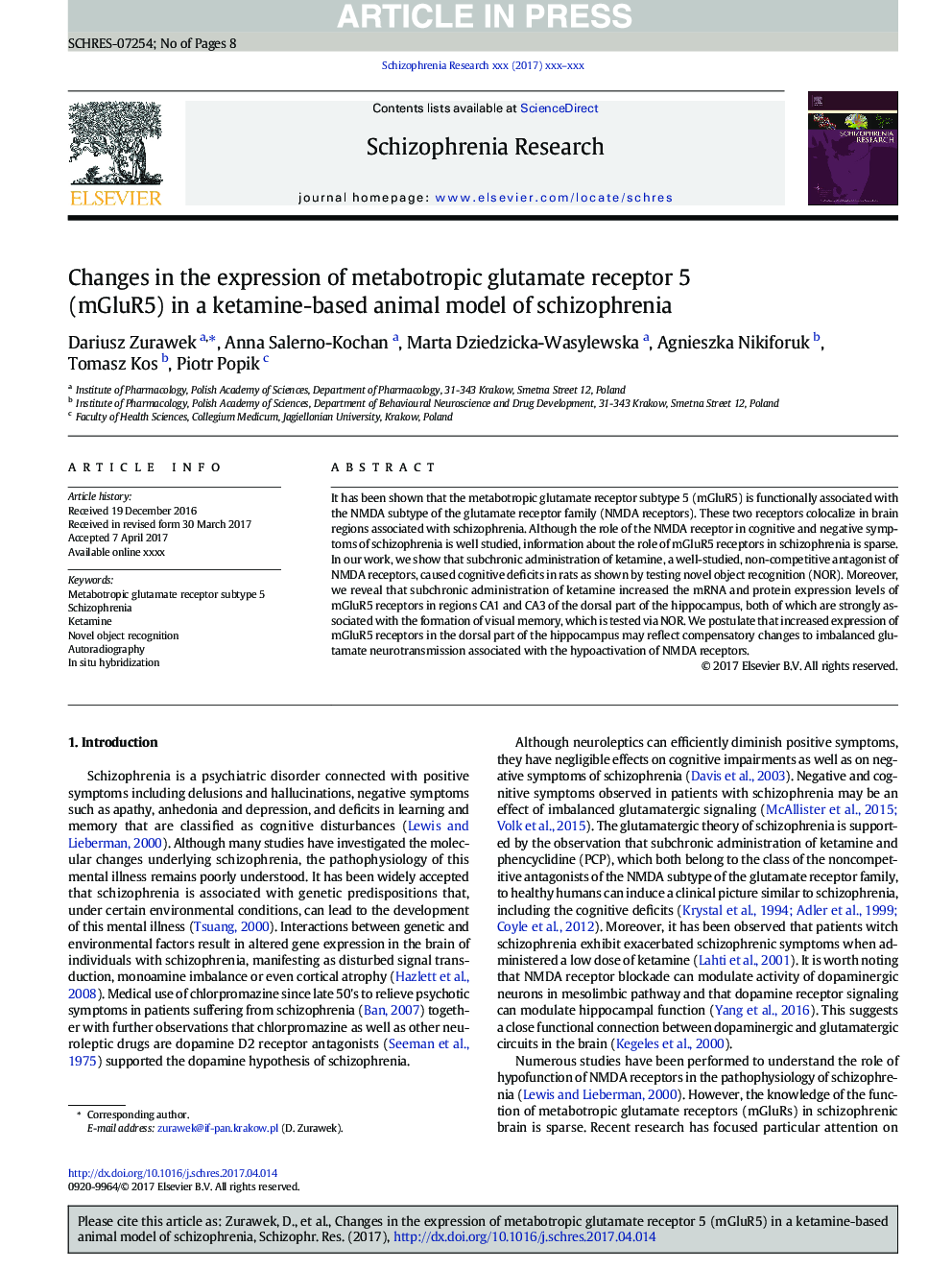| Article ID | Journal | Published Year | Pages | File Type |
|---|---|---|---|---|
| 6822237 | Schizophrenia Research | 2018 | 8 Pages |
Abstract
It has been shown that the metabotropic glutamate receptor subtype 5 (mGluR5) is functionally associated with the NMDA subtype of the glutamate receptor family (NMDA receptors). These two receptors colocalize in brain regions associated with schizophrenia. Although the role of the NMDA receptor in cognitive and negative symptoms of schizophrenia is well studied, information about the role of mGluR5 receptors in schizophrenia is sparse. In our work, we show that subchronic administration of ketamine, a well-studied, non-competitive antagonist of NMDA receptors, caused cognitive deficits in rats as shown by testing novel object recognition (NOR). Moreover, we reveal that subchronic administration of ketamine increased the mRNA and protein expression levels of mGluR5 receptors in regions CA1 and CA3 of the dorsal part of the hippocampus, both of which are strongly associated with the formation of visual memory, which is tested via NOR. We postulate that increased expression of mGluR5 receptors in the dorsal part of the hippocampus may reflect compensatory changes to imbalanced glutamate neurotransmission associated with the hypoactivation of NMDA receptors.
Keywords
Related Topics
Life Sciences
Neuroscience
Behavioral Neuroscience
Authors
Dariusz Zurawek, Anna Salerno-Kochan, Marta Dziedzicka-Wasylewska, Agnieszka Nikiforuk, Tomasz Kos, Piotr Popik,
